24.07.2022
Crew-5 Targets 29 September Launch, Second Flight for Dragon Endurance

NASA and SpaceX are now targeting No Earlier Than (NET) 29 September for the launch of Crew-5 to the International Space Station (ISS), a four-week slip to ensure Dragon Endurance’s flight readiness and an appropriate “fit” with other visiting vehicle traffic in the early fall. NASA astronauts Nicole Mann and Josh Cassada, together with Anna Kikina—the first Russian cosmonaut to fly aboard a Commercial Crew spacecraft—and veteran Japanese spacefarer Koichi Wakata will reach the station after the start of Expedition 68 for a multi-month increment aboard the sprawling orbital outpost.
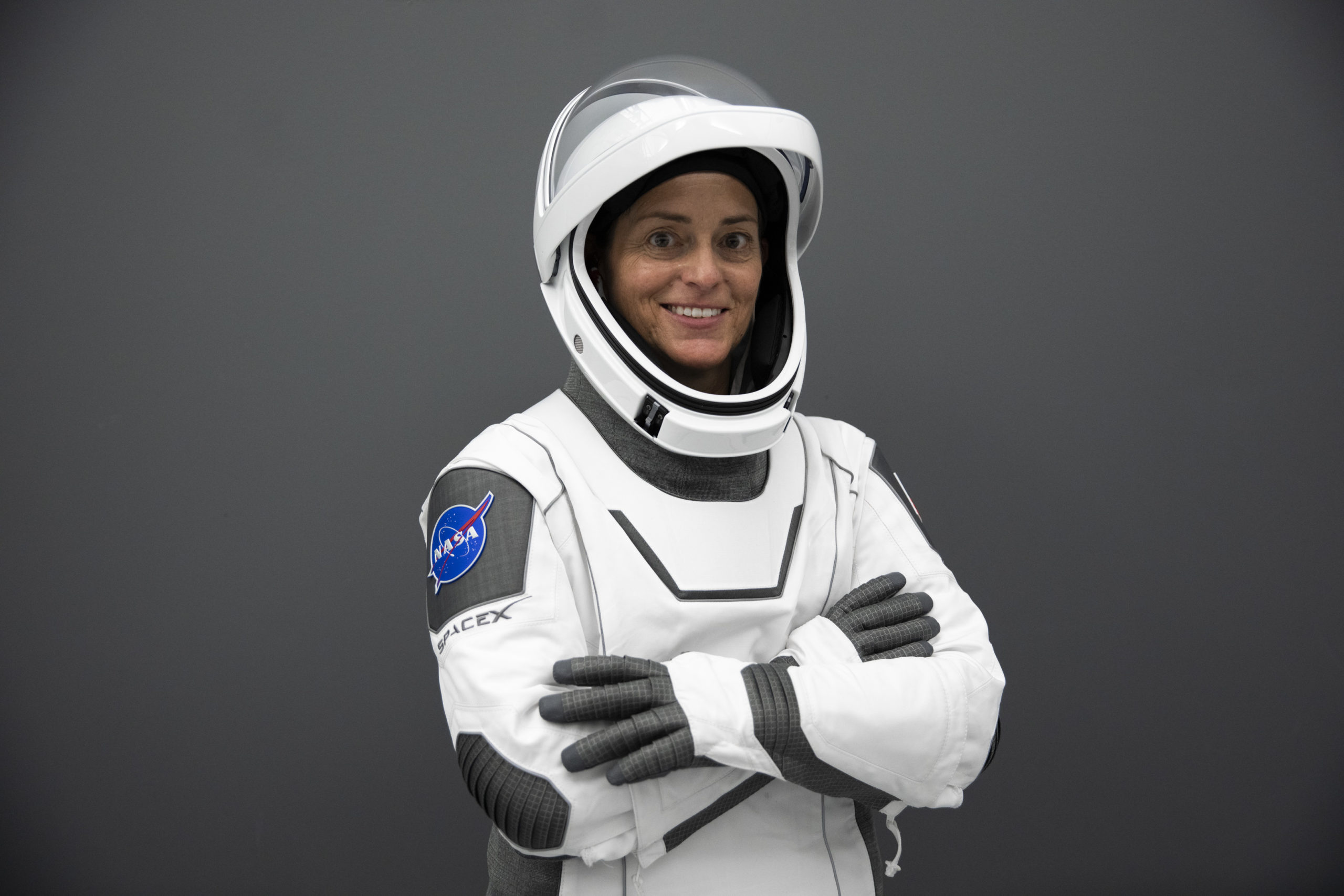
Mann and Cassada, who were both selected into NASA’s Astronaut Corps back in June 2013 and are the last members of their class to reach space, were originally assigned to fly Boeing’s CST-100 Starliner. In August 2018, Mann was named to the Crew Flight Test (CFT) of the new spacecraft, whilst Cassada was attached to Starliner’s first Post-Certification Mission (PCM-1).
But a troubled Orbital Flight Test (OFT-1) in December 2019 was followed by a lengthy NASA/Boeing investigation and a second OFT last May. That correspondingly extended Mann and Cassada’s wait for their first flight into space.
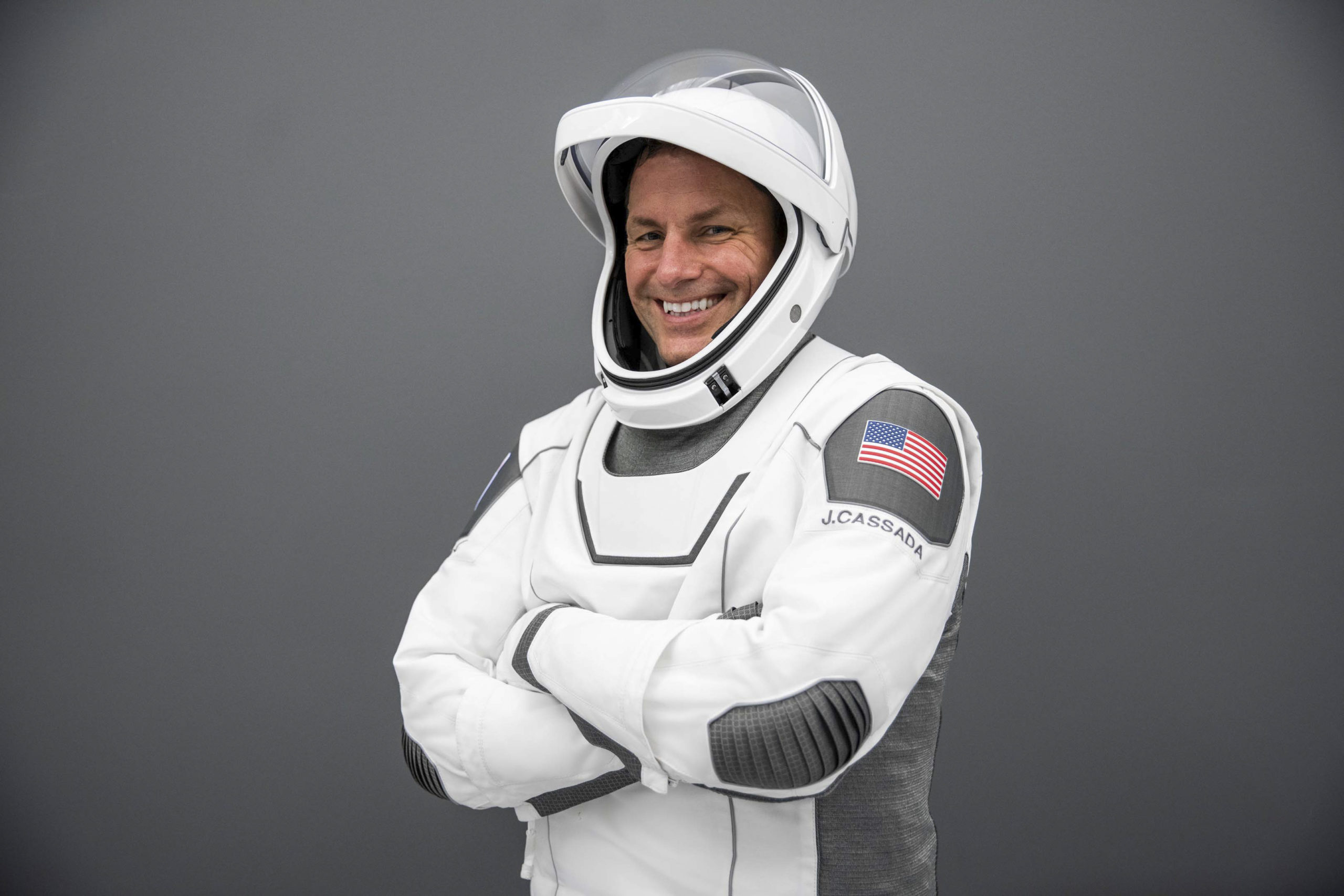
Last October, the duo were reassigned from Boeing’s Starliner over to SpaceX’s Crew Dragon and named to Crew-5. According to NASA, “it was important to make these reassignments to allow Boeing time to complete the development of Starliner, while continuing plans for astronauts to gain spaceflight experience for the future needs of the agency’s missions”.
Mann becomes only the third woman to command a crew aboard a U.S. orbital spacecraft. She follows Astronaut Hall of Fame (AHOF) inductees Eileen Collins and current NASA Deputy Administrator Pam Melroy, who commanded three Space Shuttle missions between them: the deployment of the Chandra X-ray Observatory, the delivery of the Harmony node to the ISS and the Return to Flight (RTF) following the Columbia disaster.
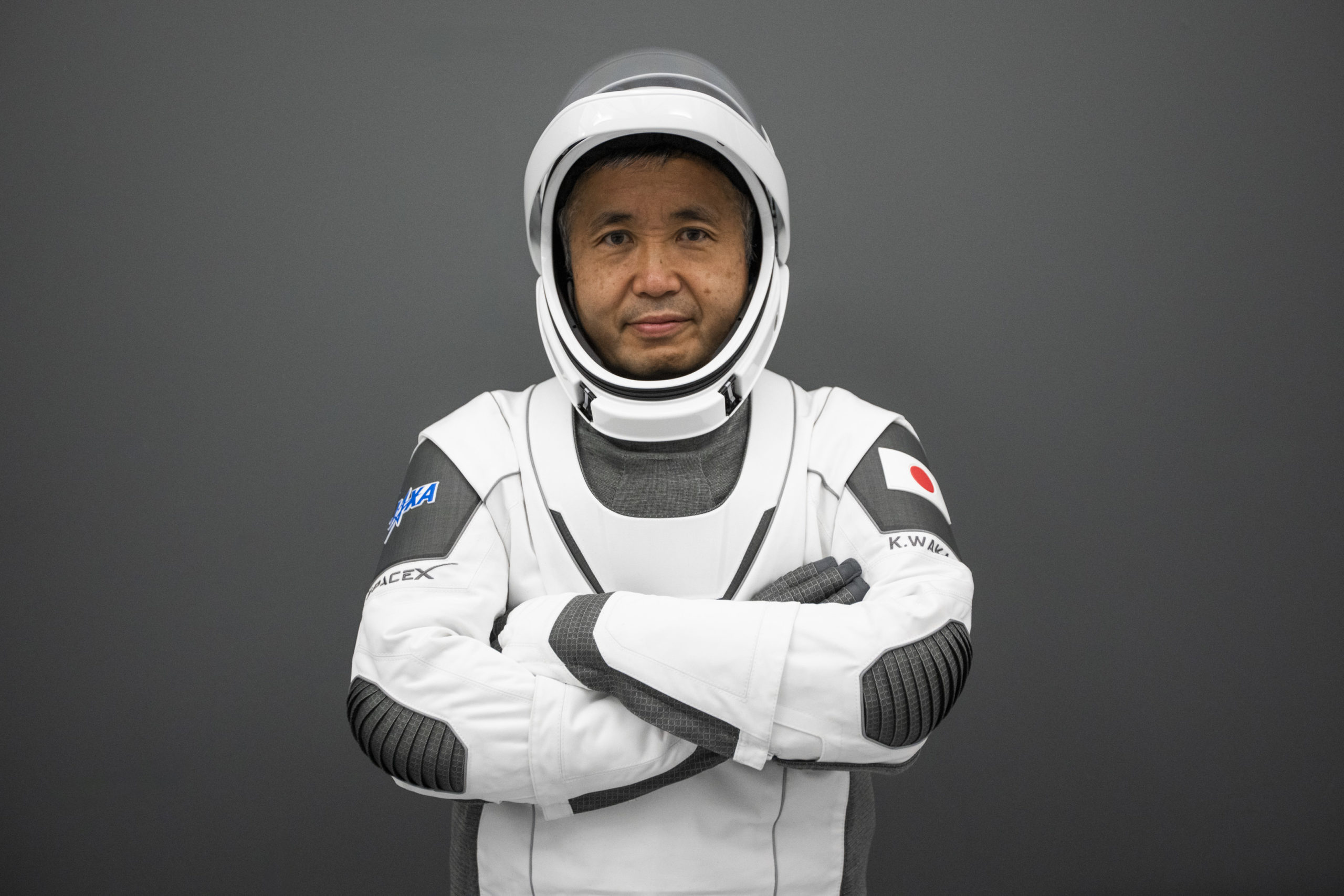
Japan’s most experienced astronaut, Koichi Wakata—already a veteran of four space missions, including two shuttle flights and a pair of ISS increments—joins Mann and Cassada as the third member of Crew-5. He has accumulated over 347 days in space during a stellar career which saw him retrieve Japan’s Space Flyer Unit (SFU) way back in January 1996, fly NASA’s 100th shuttle mission at the turn of the millennium and serve in early 2014 as the first Japanese commander of the space station.
The fourth and final member of Crew-5 has been subject to much conjecture in recent months. Plans have been in the works for several years for “integrated” operations, with each U.S. and Russian vehicle including at least one Russian Operational Segment (ROS) crew member and at least one U.S. Operational Segment (USOS) crew member.
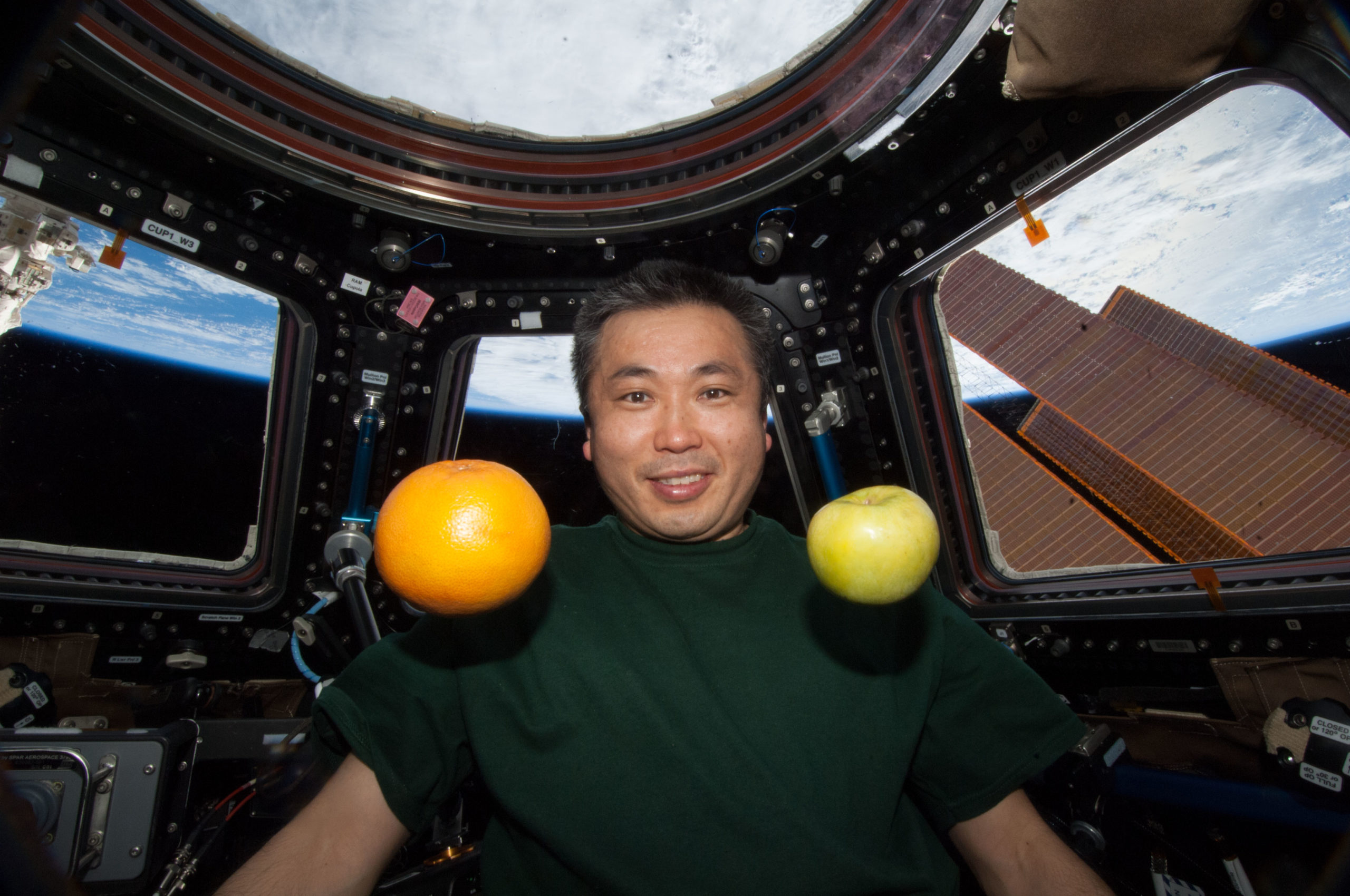
In the case of an emergency or a premature return to Earth of a Russian or U.S. vehicle, this would guard against the possibility of having no ROS or USOS crew specialty on the ISS.
But matters were complicated earlier in 2022 following Russia’s invasion of Ukraine and the bellicose Twitter rhetoric of Roscosmos head Dmitri Rogozin, who was relieved of his position—in circumstances which remain obscure—just last week. On 15 July, the very day that Rogozin stepped down, the final touches were added to the long-awaited NASA/Roscosmos crew contract, setting the plan for integrated missions in motion.
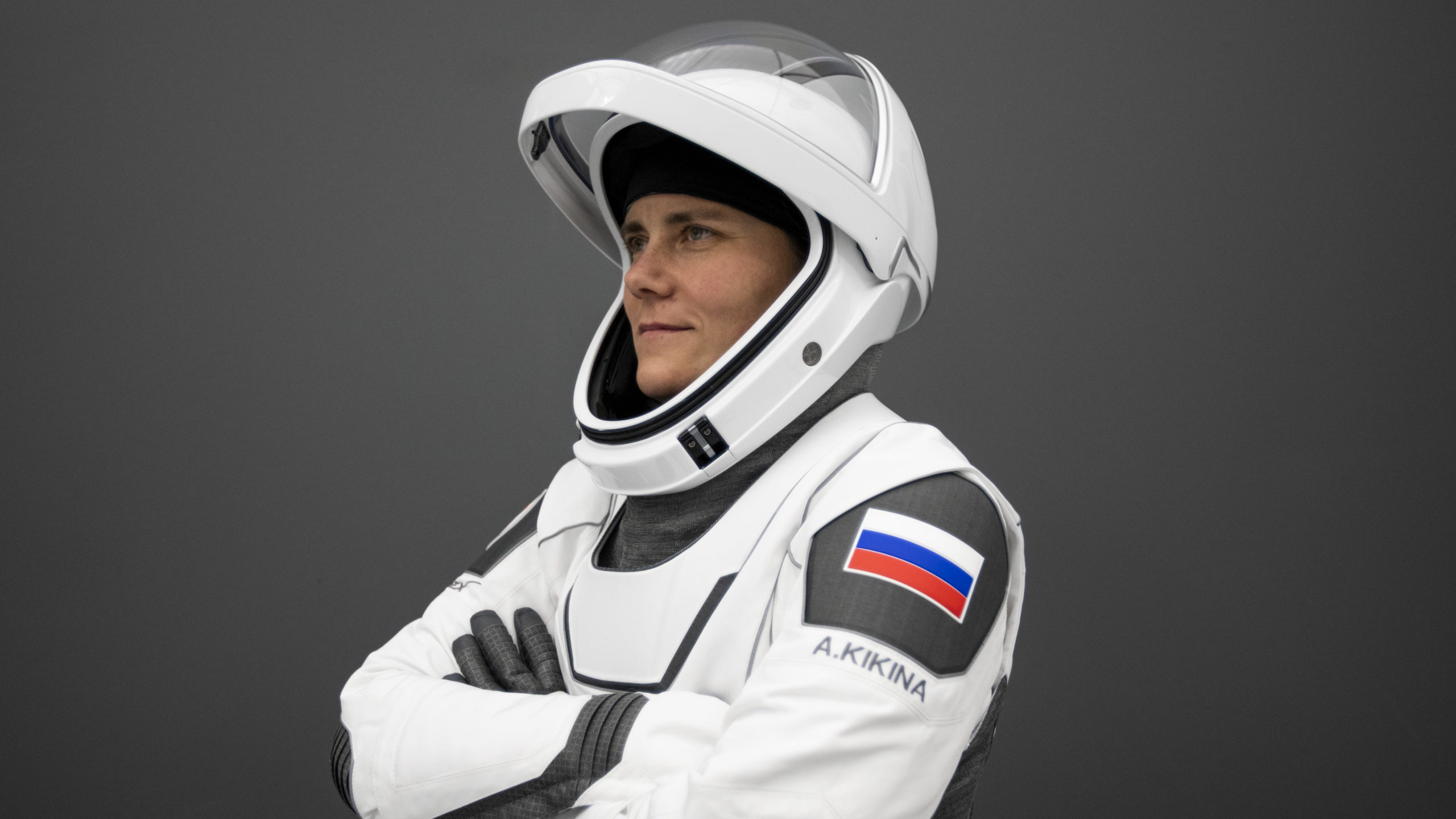
It did not come a moment too soon. In remarks delivered before 14 July’s launch of the CRS-25 cargo mission, Deputy ISS Program Manager Dana Weigel remarked that a decision on integrated crewing had to be made before the end of the following week, or “hard trades” would need to be made in terms of final crew training.
Under the integrated crewing plan, Russia’s Anna Kikina—who has trained alongside Mann, Cassada and Wakata for several months—now joins Crew-5 and fellow cosmonaut Andrei Fedyayev joins Crew-6, which is slated for launch next spring. In return, U.S. astronaut Frank Rubio will launch shoulder-to-shoulder with Russian cosmonauts Sergei Prokopyev and Dmitri Petelin aboard Soyuz MS-22 in late September and Loral O’Hara, recently NASA’s Director of Operations in Russia, joins cosmonauts Oleg Kononenko and Nikolai Chub on Soyuz MS-23, targeted for launch next March.
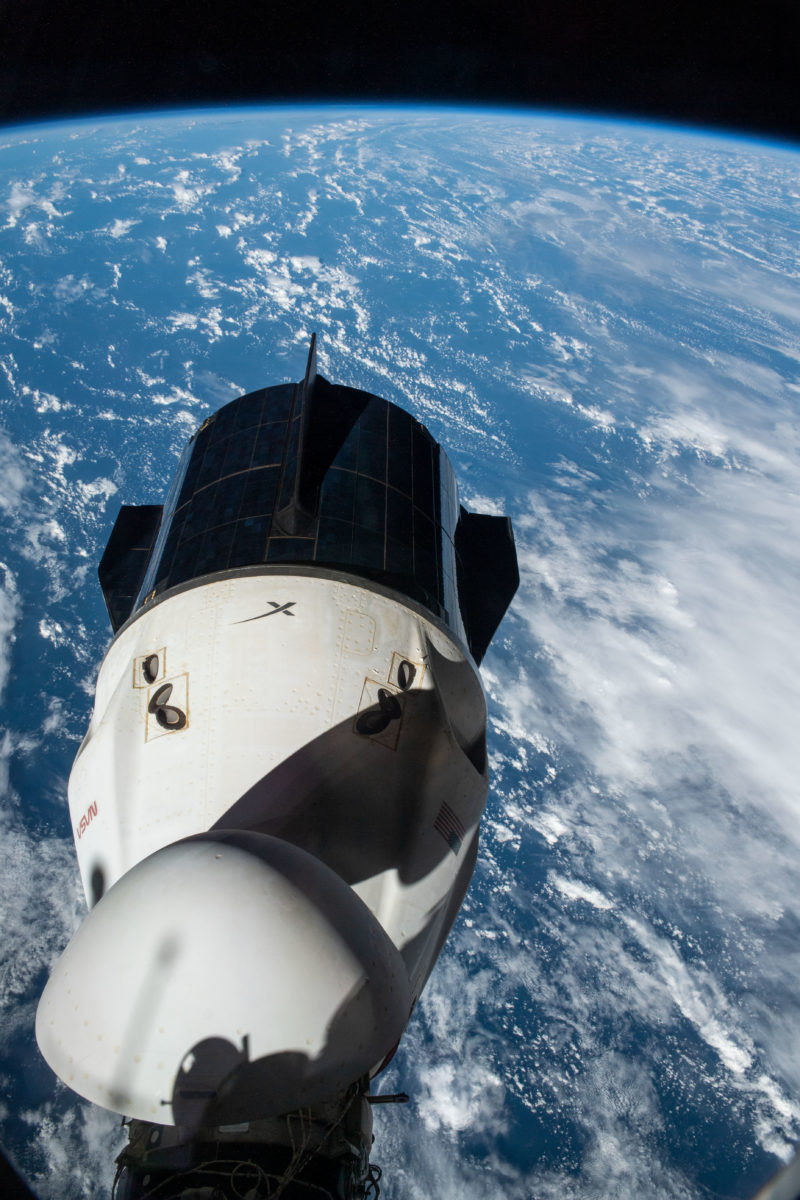
Mann, Cassada, Wakata and Kikina will launch aboard Dragon Endurance, the same vehicle which previously supported Crew-3 astronauts Raja Chari, Tom Marshburn, Kayla Barron and Matthias Maurer for their 177-day Expedition 66/67 increment to the ISS, which ended in early May. Launch was provisionally scheduled for NET 1 September, but has since been pushed back to NET 29 September.
“A launch at the end of September will allow SpaceX to complete hardware processing and mission teams will continue to review the launch date, based on the space station’s visiting spacecraft schedule,” NASA revealed Thursday. A launch at the end of September will come a week after a scheduled Soyuz “direct handover”, which will see Soyuz MS-22 launch to the ISS on 21 September with Expedition 68’s Prokopyev, Petelin and Rubio, and Soyuz MS-21 return to Earth on the 30th, bringing Expedition 67’s Oleg Artemyev, Denis Matveev and Sergei Korsakov home after 6.5 months in orbit.

The additional time allows for refurbishment to conclude on Dragon Endurance, including the installation of the heat shield, parachutes and pod panels. A first-time-flown Falcon 9 booster core will lift Mann, Cassada, Wakata and Kikina into orbit, but has encountered some difficulties which require resolution.
“SpaceX is removing and replacing the rocket’s interstage and some on-board instrumentation after the hardware was damaged during transport from SpaceX’s production factory in Hawthorne, Calif., to the company McGregor test facility in Texas for stage testing,” NASA added. “SpaceX teams completed—and NASA teams reviewed—load, shock and structural analyses, coupled with detailed and X-ray inspections, to verify the damage was isolated to the interstage and ensure the integrity of the rest of the booster.”
Quelle: AS
----
Update: 3.08.2022
.
NASA Invites Media to Next SpaceX Commercial Crew Space Station Launch

Editor's Note: This advisory was updated Monday, August 1 to note that the targeted launch date of Sept. 29 is Thursday.
Media accreditation is now open for the launch of the fifth SpaceX Dragon spacecraft and Falcon 9 rocket that will carry astronauts to the International Space Station for a science expedition mission as part of NASA’s Commercial Crew Program.
The earliest targeted launch date for the mission is Thursday, Sept. 29, from Launch Complex 39A at NASA’s Kennedy Space Center in Florida.
The Crew-5 launch will carry two NASA astronauts Mission Commander Nicole Mann and Pilot Josh Cassada, along with JAXA (Japan Aerospace Exploration Agency) astronaut Koichi Wakata and Roscosmos cosmonaut Anna Kikina, who will serve as mission specialists. This is the first spaceflight for Mann, Cassada and Kikina. It is the fifth trip for Wakata.
Following a crew handover period, astronauts from NASA’s SpaceX Crew-4 mission are scheduled for return to Earth in October aboard their SpaceX Dragon Freedom.
Media accreditation deadlines for Crew-5 launch are as follows:
- U.S. media and U.S. citizens representing international media must apply no later than 4 p.m. EDT Thursday, Sept. 1.
- International media without U.S. citizenship must apply no later than 4 p.m. Monday, Aug. 22.
All accreditation requests should be submitted online at:
COVID-19 safety protocols for this event will be communicated closer to the date of the event. For questions about accreditation, please email: ksc-media-accreditat@mail.nasa.gov.
If you have special logistical requests, such as space for satellite trucks, tents, or electrical connections, please send your request to: ksc-media-accreditat@mail.nasa.gov by Friday, Sept. 16.
Quelle: NASA
----
Update: 4.08.2022
.
NASA to Host Briefings, Interviews for Agency’s SpaceX Crew-5 Mission

A pair of news conferences on Thursday, Aug. 4, at NASA’s Johnson Space Center in Houston will highlight the agency’s SpaceX Crew-5 mission to the International Space Station. The mission is NASA’s fifth crew rotation flight involving a U.S. commercial spacecraft carrying crew for a science expedition aboard the microgravity laboratory.
The agency will host a mission overview news conference at 12:30 p.m. EDT and a crew news conference at 2 p.m. Both will air live on NASA Television, the NASA app, and the agency’s website. The crew also will be available for individual interviews after 3 p.m.
The Crew-5 mission will carry NASA astronauts Nicole Mann and Josh Cassada as well as JAXA (Japan Aerospace Exploration Agency) astronaut Koichi Wakata, and Roscosmos cosmonaut Anna Kikina. The Falcon 9 rocket and the Dragon Endurance spacecraft is scheduled to launch no earlier than Sept. 29 from Launch Complex 39A at NASA’s Kennedy Space Center in Florida.
This event will be the final media opportunity to speak to the Crew-5 astronauts before they travel to Kennedy for launch. Media wishing to participate in person or seeking a remote interview with the crew must request credentials from the Johnson newsroom at: 281-483-5111 or jsccommu@mail.nasa.gov.
U.S. media interested in attending this event must request in-person participation by noon Wednesday, Aug. 3. Media interested in participating by phone must contact the Johnson newsroom by 9:45 a.m. Thursday, Aug. 4. Those wishing to submit a question on social media may do so using #AskNASA.
Briefing participants include:
12:30 p.m. Mission Overview News Conference
- Kathryn Lueders, associate administrator, Space Operations Mission Directorate at NASA Headquarters in Washington
- Steve Stich, manager, Commercial Crew Program, NASA Johnson
- Joel Montalbano, manager, International Space Station Program, NASA Johnson
- Benjamin Reed, senior director, Human Spaceflight Program, SpaceX
- Hiroshi Sasaki, vice president and director general, Human Spaceflight Technology Directorate at JAXA
- Sergei Krikalev, executive director, Human Space Flight Programs at Roscosmos
2 p.m. Crew News Conference
- Nicole Mann, NASA astronaut, spacecraft commander
- Josh Cassada, NASA astronaut, pilot
- Koichi Wakata, JAXA astronaut, mission specialist
- Anna Kikina, Roscosmos cosmonaut, mission specialist
3 p.m. Crew Individual Interview Opportunities
- Crew-5 astronauts will be available for a limited number of interviews
This will be Mann’s first spaceflight since becoming an astronaut in 2013. As mission commander, she will be responsible for all phases of flight, from launch to re-entry. She will serve as an Expedition 68 flight engineer aboard the station. She uses the name @AstroDuke on Twitter.
Mann was born in Petaluma, California, and is Native American. She earned a bachelor’s degree in mechanical engineering from the U.S. Naval Academy and a master’s degree in mechanical engineering with a specialty in fluid mechanics from Stanford University. She is a colonel in the U.S. Marine Corps and served as a test pilot in the F/A-18 Hornet and Super Hornet.
The mission will be Cassada’s first flight since his selection as an astronaut in 2013 as well. As pilot, he will be responsible for spacecraft systems and performance. Aboard the station, he will serve as an Expedition 68 flight engineer.
Cassada grew up in White Bear Lake, Minnesota, and is a physicist and U.S. Navy test pilot. Prior to becoming a naval aviator, Cassada earned a bachelor’s degree in physics at Albion College in Albion, Michigan, and a doctorate at the University of Rochester, New York, conducting experimental high energy physics research at Fermi National Accelerator Laboratory in Illinois. Follow @astro_josh on Twitter.
Wakata will be making his fifth trip to space on his third different spacecraft, and as a mission specialist he will work closely with the commander and pilot to monitor the spacecraft during the dynamic launch and re-entry phases of flight. Once aboard the station, he will become a flight engineer for Expedition 68. Follow @Astro_Wakata on Twitter.
Kikina will be making her first trip to space, and will also serve as a mission specialist, working to monitor the spacecraft during the dynamic launch and re-entry phases of flight. She will be a flight engineer for Expedition 68.
Quelle: NASA
----
Update: 18.08.2022
.
NASA astronaut Nicole Aunapu Mann will be the first Native American woman to travel to space
When NASA launches its next crew aboard a SpaceX Dragon this fall, the mission commander, astronaut Nicole Aunapu Mann, will become the first Native American woman to travel to space.
Mann will be heading to the International Space Station, with liftoff currently targeted for Sept. 29. She will be joined on the Crew-5 mission by NASA astronaut Josh Cassada, Japan Aerospace Exploration Agency astronaut Koichi Wakata and Russian cosmonaut Anna Kikina.
NASA says this will be her first spaceflight.

Born in California, Mann graduated from the U.S. Naval Academy and now holds the rank of colonel in the U.S. Marine Corps. She earned her wings as a Navy aviator and deployed twice aboard aircraft carriers, flying missions in support of combat operations in Iraq and Afghanistan. She also earned a master's degree in mechanical engineering from Stanford.
Mann was selected by NASA in June 2013 as one of eight members of the 21st NASA astronaut class intended to focus on space station operations before possible assignments to future missions to the moon, near-Earth asteroids or, eventually, Mars.
In a recent interview with Indian Country Today, Mann said "it's very exciting" to be the first Native woman in space. "I think it's important that we communicate this to our community, so that other Native kids, if they thought maybe that this was not a possibility or to realize that some of those barriers that used to be there are really starting to get broken down," she told the publication, which noted that she is an enrolled member of the Wailacki of the Round Valley Indian Tribes in Northern California.
While Mann will earn a place in the history books, NASA astronaut John Herrington, a member of the Chickasaw Nation, became the first Native American in space when he flew aboard Space Shuttle Endeavour in 2002.
Mann's NASA training includes intensive instruction in International Space Station systems, spacewalks, Russian language training, robotics, physiological training, T-38 flight training and water and wilderness survival training.
Mann has achieved numerous awards, including two Air Medals, two Navy and Marine Corps Commendation Medals, two Navy and Marine Corps Achievement Medals.
Quelle: CBS News
----
Update: 29.08.2022
.
NASA, SpaceX adjust Crew-5 launch date

NASA and SpaceX are targeting no earlier than 12:45 p.m. EDT Monday, Oct. 3, for the launch of the agency's Crew-5 mission to the International Space Station. The date adjustment allows for extra separation with spacecraft traffic coming to and from the space station.
Crew-5 will carry two NASA astronauts Mission Commander Nicole Mann and Pilot Josh Cassada, along with JAXA (Japan Aerospace Exploration Agency) astronaut Koichi Wakata and Roscosmos cosmonaut Anna Kikina, who will serve as mission specialists.
This is the first spaceflight for Mann, Cassada and Kikina. It is the fifth trip for Wakata. SpaceX's Falcon 9 rocket will launch Dragon Endurance and the crew from Launch Complex 39A at NASA's Kennedy Space Center in Florida for a science expedition mission at the space station.
Following a crew handover period, astronauts from NASA's SpaceX Crew-4 mission are scheduled for return to Earth in October aboard their SpaceX Dragon Freedom.
Quelle: SD
----
Update: 4.09.2022
.
Experience the Launch of NASA’s SpaceX Crew-5 Mission

Digital content creators are invited to register to attend the launch of the fifth SpaceX Crew Dragon spacecraft and Falcon 9 rocket that will carry astronauts to the International Space Station for a science expedition mission. This mission is part of NASA’s Commercial Crew Program.
The earliest targeted launch date for the agency’s SpaceX Crew-5 mission is Oct. 3, from Kennedy’s Launch Complex 39A. The launch will carry NASA astronauts Nicole Mann, commander; Josh Cassada, pilot; and mission specialists Koichi Wakata, of JAXA (Japan Aerospace Exploration Agency), and Roscosmos cosmonaut Anna Kikina.
If your passion is to communicate and engage the world online, then this is the event for you! Seize the opportunity to be on the front line to see and share the #Crew5 mission launch.
A maximum of 35 social media users will be selected to attend this two-day event and will be given access similar to news media.
NASA Social participants will have the opportunity to:
- View a launch of the SpaceX Falcon 9 rocket
- Tour NASA facilities at Kennedy Space Center
- Meet and interact with Crew-5 subject matter experts
- Meet fellow space enthusiasts who are active on social media
NASA Social registration for the Crew-5 launch opens on August 31 and the deadline to apply is September 6 at 3 p.m. EDT. All social applications will be considered on a case-by-case basis.
Do I need to have a social media account to register?
Yes. This event is designed for people who:
- Actively use multiple social networking platforms and tools to disseminate information to a unique audience.
- Regularly produce new content that features multimedia elements.
- Have the potential to reach a large number of people using digital platforms.
- Reach a unique audience, separate and distinctive from traditional news media and/or NASA audiences.
- Must have an established history of posting content on social media platforms.
- Have previous postings that are highly visible, respected and widely recognized.
Users on all social networks are encouraged to use the hashtag #NASASocial, and #Crew5. Updates and information about the event will be shared on Twitter via @NASASocial and @NASAKennedy, and via posts to Facebook and Instagram.
How do I register?
Registration for this event opens August 31 and closes at 3 p.m. EDT on September 6. Registration is for one person only (you) and is non-transferable. Each individual wishing to attend must register separately. Each application will be considered on a case-by-case basis.
Can I register if I am not a U.S. citizen?
Because of the security deadlines, registration is limited to U.S. citizens. If you have a valid permanent resident card you will be processed as a U.S. citizen.
When will I know if I am selected?
After registrations have been received and processed, an email with confirmation information and additional instructions will be sent to those selected. We expect to send the first notifications on September 13 and waitlist notifications on September 14.
What are NASA Social credentials?
All social applications will be considered on a case-by-case basis. Those chosen must prove through the registration process they meet specific engagement criteria.
If you do not make the registration list for this NASA Social, you still can attend the launch offsite and participate in the conversation online. Find out about ways to experience a launch here.
What are the registration requirements?
Registration indicates your intent to travel to NASA's Kennedy Space Center in Florida and attend the two-day event in person. You are responsible for your own expenses for travel, accommodation, food, and other amenities.
Some events and participants scheduled to appear at the event are subject to change without notice. NASA is not responsible for loss or damage incurred as a result of attending. NASA, moreover, is not responsible for loss or damage incurred if the event is cancelled with limited or no notice. Please plan accordingly.
Kennedy is a government facility. Those who are selected will need to complete an additional registration step to receive clearance to enter the secure areas.
IMPORTANT: To be admitted, you will need to provide two forms of unexpired government-issued identification; one must be a photo ID and match the name provided on the registration. Those without proper identification cannot be admitted. For a complete list of acceptable forms of ID, please visit: NASA Credentialing Identification Requirements.
All registrants must be at least 18 years old.
What if the launch date changes?
Hundreds of different factors can cause a scheduled launch date to change multiple times. The launch date will not be official until after the Flight Readiness Review. If the launch date changes prior to then, NASA may adjust the date of the NASA Social accordingly to coincide with the new target launch date. NASA will notify registrants of any changes by email.
If the launch is postponed, attendees will be invited to attend a later launch date. NASA cannot accommodate attendees for delays beyond 72 hours.
NASA Social attendees are responsible for any additional costs they incur related to any launch delay. We strongly encourage participants to make travel arrangements that are refundable and/or flexible.
What if I cannot come to the Kennedy Space Center?
If you cannot come to the Kennedy Space Center and attend in person, you should not register for the NASA Social. You can follow the conversation using the #NASASocial hashtag on Twitter. You can watch the launch on NASA Television or www.nasa.gov/live. NASA will provide regular launch and mission updates on @NASA, @NASAKennedy, and @Commercial_Crew.
What are the safety protocols for this event?
COVID-19 safety protocols for this event will be communicated closer to the date of the event.
If you cannot make this NASA Social, don't worry; NASA is planning many other Socials in the near future at various locations! Check back here for updates.
Quelle: NASA
----
Update: 18.09.2022
.
SpaceX and NASA in final preparations for Crew-5 mission

With the launch just weeks away, SpaceX, NASA, and their international partners are in final preparations for the fifth operational Crew Dragon mission. As part of NASA’s Commercial Crew Program (CCP), Crew-5 will be SpaceX’s fifth long-duration crew mission, eighth overall crewed mission, and the first mission with a Russian Cosmonaut.
Crew-5 will launch from the Kennedy Space Center (KSC) using a brand-new Falcon 9 and flight-proven Crew Dragon. The mission will launch from the historic Launch Complex 39A (LC-39A) on Oct. 3, 2022, at 12:45 PM EDT (16:45 UTC).
The crew will consist of a nearly all-rookie crew, with only a single astronaut having flown on a previous mission. NASA astronaut Nicole Anuapu Mann will act as the spacecraft commander, making her the first woman to command Crew Dragon, and Josh Cassada will act as the spacecraft pilot. Before being assigned to Crew-5, Mann was to fly the Starliner Crew Flight Test (CFT) and Cassada on the first operational Starliner flight. With Starliner’s continuing delays, the two were reassigned to Crew-5 to allow both of them to gain flight experience.
JAXA astronaut Koichi Wakata and Roscosmos cosmonaut Anna Kikina will be joining the crew as Mission Specialists. Wakata will make his fifth spaceflight and fourth overall mission to the ISS. On the STS-92 and Expedition 18/19/20 missions, he became the first Japanese astronaut to work on the assembly of the ISS and complete a long-duration stay.
As the first cosmonaut to fly on Crew Dragon, Kikina is a part of the first US-Russia crew swap. In exchange for the ride on Dragon, NASA astronaut Francisco Rubio will fly on Soyuz MS-22, which will launch to the ISS in September 2022. Crew-5 will be the first mission since STS-113 to have a cosmonaut fly on a US spacecraft.
NASA and Roscomos approved the crew swap in July 2022 along with a swap between Soyuz MS-23 and Crew-6. These missions will launch in Spring 2023.
Crew-5 comes just weeks after NASA announced they awarded SpaceX five additional CCP flights. In early 2022, NASA awarded three additional missions for up to Crew-9. A few months later, NASA awarded five more flights, bringing SpaceX up to 14 missions with flights through Crew-14. Between Dragon and Starliner, these extra flights will give NASA uninterrupted flights to the ISS until it reaches the end of its life in 2030.
The first stage, B1077-1, will make its first flight on Crew-5, marking the third Falcon 9 booster to be introduced in 2022. B1077 will follow B1071 and B1073,which were introduced on the NROL-87 and Starlink Group 4-15 missions, respectively. The booster completed its long-duration hot fire in McGregor Texas in August of this year. However, before reaching McGregor, the booster hit a bridge during transportation from Hawthorne, California.
Thankfully, the only damage to B1077 was minor damage to the interstage. Out of caution, SpaceX replaced the interstage, and testing went as planned. The booster was then transported to KSC to support Crew-5 on Sept. 7, 2022.
This will be the first time since SpaceX Crew-1 that a new booster has supported a crewed mission. Other recent crewed missions have utilized boosters with up to five previous flights.
In SpaceX’s current fleet of four Crew Dragons, Endurance is relatively new, having only flown on the SpaceX Crew-3 missionin November 2021. After reaching the ISS, it remained in orbit for 177 days before safely splashing down in the Gulf of Mexico. It was then recovered by SpaceX’s recovery ship Shannon, which secured the Dragon and returned it to Port Canaveral.
Once back in Port Canaveral, preparations began to inspect and refurbish Endurance for Crew-5. During refurbishment, SpaceX checked nearly all parts of the spacecraft to ensure readiness for another flight. During these inspections, SpaceX spotted minor damage to the parachute canopy; however, it was well within parameters and will not add any additional risk to the crew.
SpaceX completed a standard set of tests for the heat shield. During these tests, a new heat shield composite structure didn’t pass acceptance testing, leading to the use of a different structure.
Dragon’s four forward-facing Draco thrusters and interior window panes will be flight-proven for this flight.
As a part of the refurbishment procedure, SpaceX replaced several components, including the parachutes, pod panels, and Dragon’s thermal protection system. Overall, this refurbishment process went quickly, as Endurance will break the record for the fastest turnaround time at 150 days.
After completing refurbishment on Endurance, SpaceX moved the spacecraft to a processing facility at Cape Canaveral Space Force Station (CCSFS) to go through a final test campaign. Once complete, SpaceX will mate Endurance to an unpressurized truck section, before moving the completed stack to the Horizontal Integration Facility (HIF) at LC-39A.
In the HIF, B1077 will have its second stage installed and placed on the Strongback Transporter Erector (T/E). The completed Dragon will be placed onto the second stage, creating the full Falcon 9 stack.
The T/E at LC-39A can be configured for a Falcon 9 with a payload fairing or Dragon spacecraft, as well as Falcon Heavy (with a payload fairing). LC-39A recently supported the Starlink Group 4-2 & BlueWalker 3 mission using equipment to support a payload fairing. Before Crew-5, SpaceX will configure the T/E to support Crew Dragon.
Once all preparations, modifications, and testing are complete, the T/E will roll out Falcon 9 to the pad and begin more testing. These tests will culminate in a static fire test, where SpaceX will go through the countdown without the crew.
During the static fire, the launch teams will work through a launch-day countdown, including fueling Falcon 9 and test firing all nine of its first stage engines for several seconds. This test will take place a few days before launch.
The crew will complete a “dry dress” rehearsal before the static fire. This rehearsal takes the entire launch team and crew for a complete countdown without fueling the rocket. The dry dress will include:
- Suiting up.
- Transporting to the pad.
- Boarding Dragon.
- Going through a mock fueling and final countdown to the launch.
- Launch and pad teams practicing evacuation procedures.
These final tests will culminate in the Flight Readiness Review (FRR) and Launch Readiness Review (LRR). The FRR will have SpaceX, NASA, all international partners, and significant personnel give the final approval for the flight. SpaceX and NASA will complete the LRR before launch to ensure the teams are ready to support the launch.
Launch day will follow like any other crewed Dragon launch. A few hours before launch, the crew will don their suits and depart to LC-39A in modified Tesla Model X vehicles.
At T-45 minutes, the SpaceX launch director will poll the teams to give the “go” for launch operations. The Crew Access Arm (CAA) will retract, and SpaceX will arm Endurance’s SuperDraco abort system.
Following its Oct. 3 launch, Dragon Endurance will approach the ISS, performing an automated docking to the Forward port of the Node-2/Harmony module. Once sending Dragon to space, B1077 will attempt to land on one of SpaceX’s Autonomous Spaceport Drone Ships. Pending a successful recovery, it will join the 12 other boosters in the active fleet.
To prepare for Crew-5, Cargo Dragon C208-3 departed the ISS on Aug. 19, undocking from the Forward port after a month at the orbiting lab.
Once docked with the station, Dragon and its crew will remain at the ISS for approximately six months. They will join the Expedition 67/68 crew, raising the ISS’ population to 11. Crew-5 will work with Crew-4 for a direct handover to transfer operations to Crew-5, allowing Crew-4 to depart via Dragon Freedom and return to Earth, reducing the population to seven.
On the station, Crew-5 will see multiple vehicles visiting the ISS. For US vehicles, Northrop Grumman’s NG-18 Cygnus spacecraft will reach the ISS in October to resupply the station with cargo and science. In November, SpaceX will launch its new Cargo Dragon C211 on the CRS-26 mission to send science and two more iROSA solar arrays.
In NET Spring 2023, Boeing will launch its CFT mission for its crewed demonstration mission.
Quelle: NS
